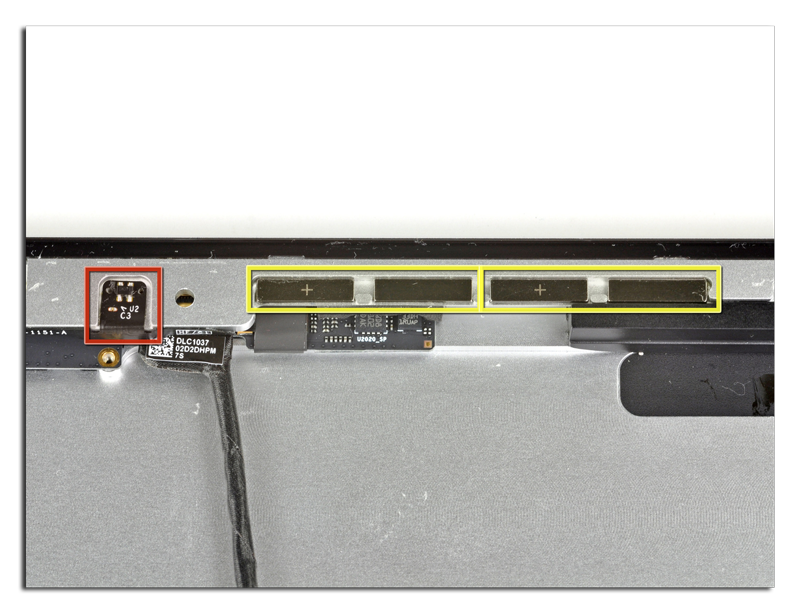For the first time ever, iFixit conducted a teardown of a case, a move that highlights the unique nature of Apple's Smart Cover for the iPad 2. When the iPad 2 was first introduced, Apple touted that its accessory cover was developed alongside the new touchscreen tablet.
The solutions provider utilized magnetic viewing film to demonstrate the magnetic poles of the material inside the Smart Cover. It found that one magnet is used to turn off the iPad 2 screen, while the rest are used to either clamp the case to the iPad 2 or form the triangle shape that allows the case to act as a stand.
The sleep control for the iPad 2 can even be triggered with a separate magnet without using the Smart Cover, automatically enabling or disabling the screen.
Inside the iPad 2, a row of magnets are located on the right side of the device, making the Smart Cover clamp to the surface of the device. The magnets are clearly labeled with their alternating polarity, which ensures the Smart Cover always sits in the same orientation.
Also included in the iPad 2 are a row of magnets along the left side of the device, which allows the Smart Cover to latch onto the side and pivot to open and allow access to the screen. iFixit found that the magnets inside the iPad and its accompanying Smart Case on the left side are "very strong," and witnessed them make a two-inch leap to connect.
Inside the Smart Cover, iFixit found:
- A large metal place encased in plastic that adheres to the magnets to form the stand.
- Two yellow all-plastic plates in the middle that exist purely for structural support.
- A stack of magnets.
The teardown also revealed that Apple opted for a steel-to-magnet bond, which is weaker than a magnet-to-magnet bond, which is why there are a total of 21 magnets inside the case. iFixit said that Apple needed "lots more magnets to prevent the case from literally falling apart during use."
The Smart Case does not use any correlated magnets, which have a complex field of patterns rather than standard positive and negative polarity. The magnets used by Apple inside both the Smart Cover and iPad 2 are regular two-pole magnets.
Last week, iFixit conducted a more traditional teardown of the iPad 2 itself. The disassembly of Apple's latest touchscreen tablet revealed that the new device has a slightly bigger battery than its first-generation counterpart, as well as double the RAM with 512MB.
 Slash Lane
Slash Lane










-m.jpg)






 William Gallagher
William Gallagher
 Andrew Orr
Andrew Orr
 Malcolm Owen
Malcolm Owen


 Wesley Hilliard
Wesley Hilliard






-m.jpg)




75 Comments
If the magnet is that strong, we might start hearing people complaining their iPad scrambled their notebook hard drive, whether it's really possible or not.
Then we have problems with people with pacemaker.
If the magnet is that strong, we might start hearing people complaining their iPad scrambled their notebook hard drive, whether it's really possible or not.
It's possible yes, but not as bad as it used to be in the early days.
For some reason I thought there would be more magnets on the hinge side rather than the screen-closure side. But it kinda makes sense to prevent the screen cover from always opening up.
White iPad 2 and Red Leather cover for me please, thx.
Or... I might skip this revision all together. Resistance, though, as we know, is usually... futile.
It was smart of Apple to build the smart cover functionality directly into the iPad itself. It's not going to be too easy for the copycats to implement this particular idea, as they would probably have to start from scratch all over again, causing them to redesign and rethink their entire tablet, leading to further huge delays, and by that time the iPad 3 will already be hitting the shelves.